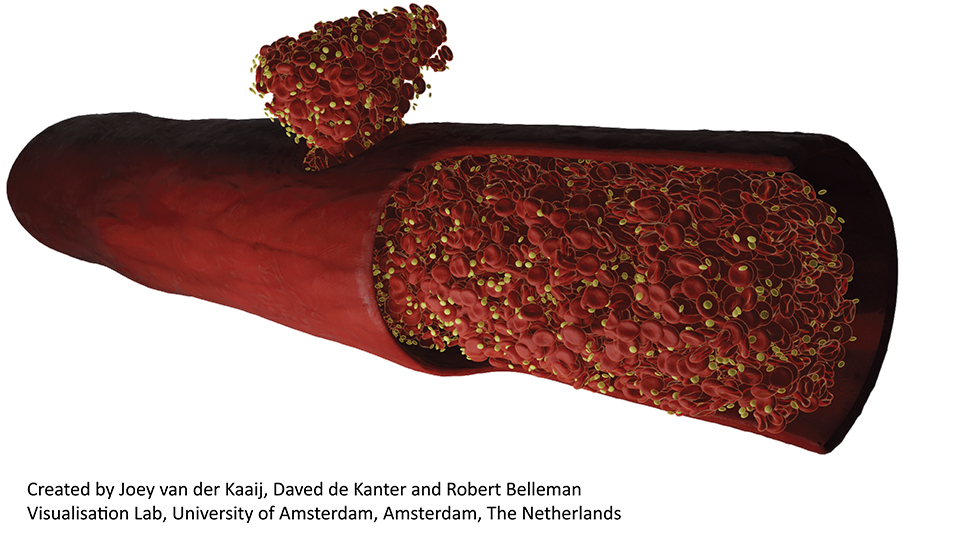
Christian Spieker, Gábor Závodszky & Alfons Hoekstra have published a new paper in Physics of Fluids that became a featured article and was published in combination with a Scilight article.
When receiving a bleeding injury, the body defends itself by triggering the blood clotting process hemostasis. However, in the case of thrombosis, this clotting process is mistakenly activated without any external injury. The misfired clot is called a thrombus and narrows the vessel’s diameter or blocks it entirely, leading to heart attack or stroke.
Blood thinners can reduce thrombosis risk for patients but are accompanied by significant side effects. Spieker et al. simulated the initial hemostasis environment to understand how vessel conditions impact the early stages of platelet aggregation.
“The main motivation of this work is very fundamental,” said author Christian Spieker. “We want to improve our understanding of how exactly hemostasis differs from thrombosis to help the advancement of anti-thrombotic agents.”
Their simulation mimics the flow of a vessel punctured by a microneedle, an injury about the size of a mosquito bite. They modeled both a cylindrical vessel and the space surrounding the wound opening. Complementary microfluidic experiments were driven by multiple pumps to control blood flow and pressure.
“The experiments in our work show that the initial step of this process (the aggregation of platelets) is dependent on the local flow environment,” said Spieker. “We concluded that while certain flow conditions enable platelet aggregate formation, the cellular distributions can determine their location and are therefore extremely relevant.”
With more information about thrombus formation, it will be easier to diagnose conditions with heightened thrombosis risk. They also hope their work will lead to blood thinners that act based on specific flow conditions.
https://doi.org/10.1063/10.0020436
Source: “Initial platelet aggregation in the complex shear environment of a punctured vessel model,” by Christian J. Spieker, Gábor Závodszky, Clarisse Mouriaux, Pierre H. Mangin, and Alfons G. Hoekstra, Physics of Fluids (2023). The article can be accessed at https://doi.org/10.1063/5.0157814.
